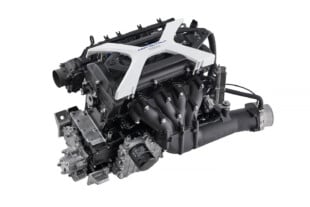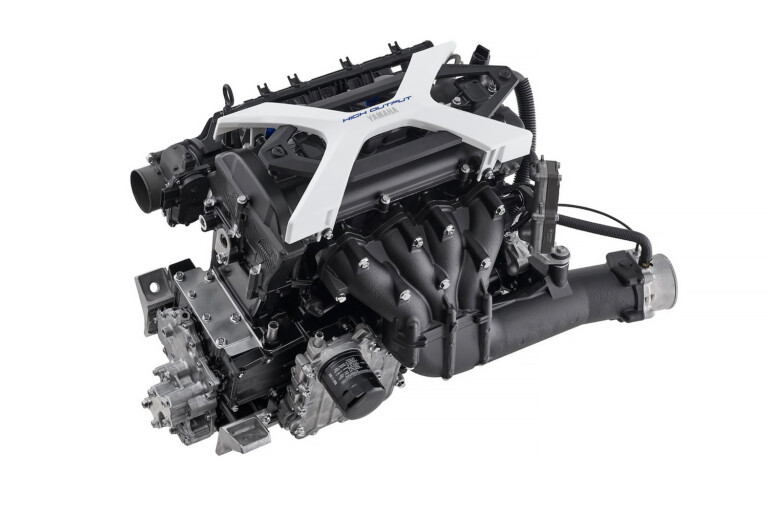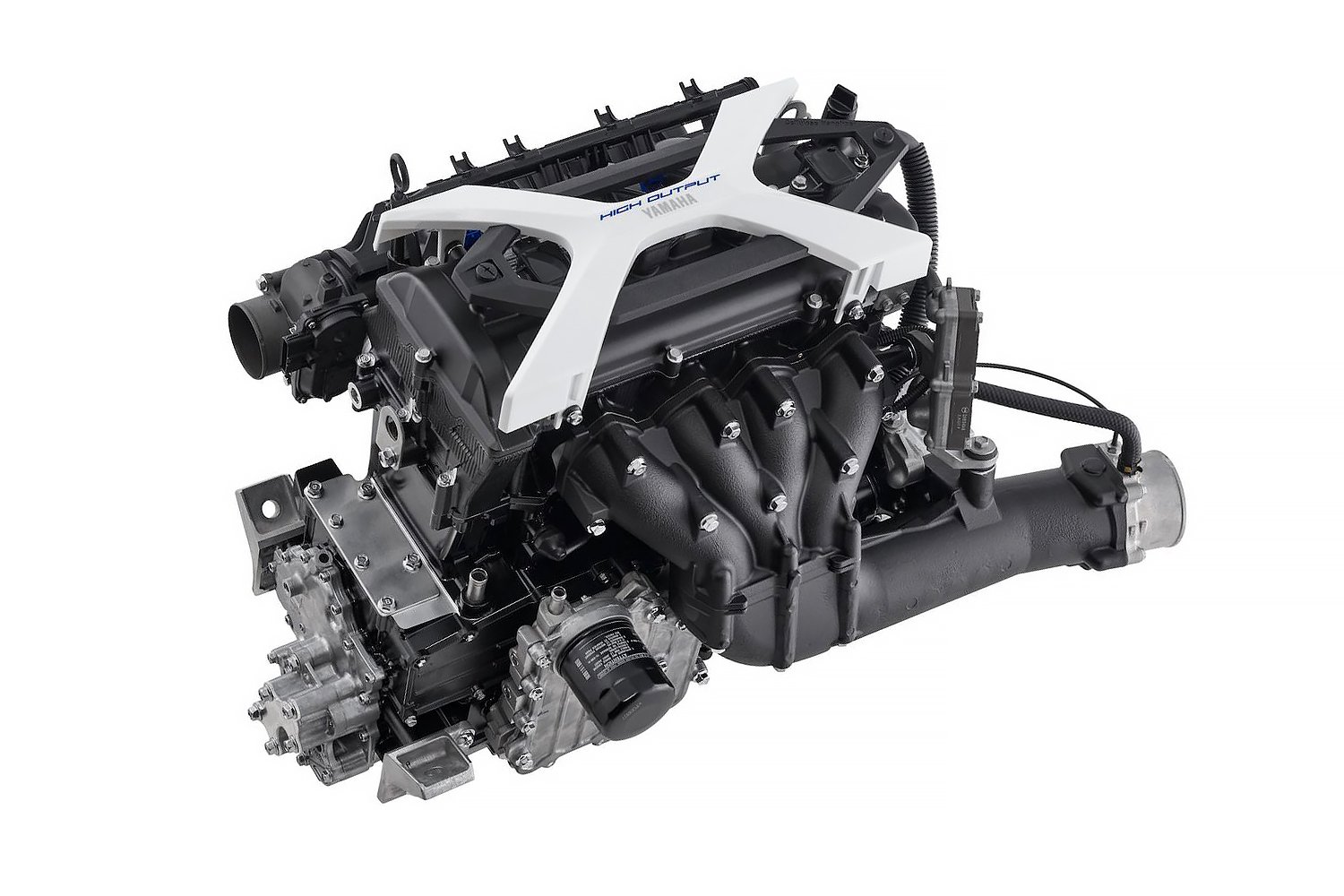During the first session of this year’s Advanced Engineering Technology Conference, Jim MacFarland, Don Ward, and Jeremy Worm discussed the technology behind E3 spark plugs, and how that technology has been applied to racing.
MacFarland, a member of the SEMA Hall of Fame, opened the seminar by discussing different methods of enhancing combustion efficiency and how to improve the combustion mixture.
“We’ve long known that the better the the mixture is, the better the combustion process becomes, you burn more fuel in the same amount of time, and torque increases,” said MacFarland. “The E3 technology increases flamefronts in very special ways.”
Jeremy Worm, a researcher in the APS Labs at Michigan Tech, then jumped into the discussion to cover some of the experimental work he did with the E3 spark plugs to determine their impact on engine performance.
 “The experimental work that we did with E3 looked at the impact of the technology on engine performance; we wanted to develop an experimental test plan that had engine aspects to it so we could visualize what was going on. So we developed a test scheme that had two very distinct facets to it — engine testing and combustion visualization,” said Worm.
“The experimental work that we did with E3 looked at the impact of the technology on engine performance; we wanted to develop an experimental test plan that had engine aspects to it so we could visualize what was going on. So we developed a test scheme that had two very distinct facets to it — engine testing and combustion visualization,” said Worm.
APS Labs has the facilities to make these two concepts a reality. As one of only two facilities in the world with a high-temperature, high-pressure combustion vessel to perform this type of testing, they can emulate in-cylinder conditions to evaluate performance without the complexity of an engine and its ancillary parts — pistons, valves, etc. — to complicate the process. The vessel has six windows in it for optical access, along with additional posts for fuel and ignition. The lab typically studies things like spray patterns in direct-injection situations, fuel properties and performance, and other similar processes.
“We are really able to focus in and look at what’s happening around the spark plug,” said Worm.
For the testing, APS used both a traditional J-wire spark plug along with the E3-style plug that uses the alternative geometry at the ground strap around the center electrode. Using methane as fuel to ensure that there was a homogeneous mixture in the combustion vessel, they matched the temperature and pressure in the vessel to the conditions typically seen within an engine’s cylinder at the time of ignition.
Using a high speed camera, they captured 16,000 frames per second to show how the flame propagates downward from the spark when the ignition fires. At this point, he displayed a number of videos on the screen to show off the differences in how the two types of plugs affected the flame front within the cylinder.
It was interesting to note that as the flame front traveled from one side of the cylinder to the other, there was a distinct wall-type effect between the unburnt gases and the burnt gases on the back side of the flame front. And with the alternative-geometry E3 plug, there is more turbulence in the cylinder, and the flame front travels much further down into the cylinder when compared to the traditional J-wire plug.
“These are time-aligned videos from the point of ignition, which shows that the alternative-geometry plug creates much faster flame propagation,” says Worm. “When we take this out and look at it as an individual frame, we can see that there is a significant and noticeable difference in flame growth — especially around the 12ms time zone. There is more surface area to the flame and it’s growing faster.”
This portion of the study showed that there were significant differences, and in their quest to quantify the ultimate burn rate within the cylinder, they looked at a number of different engine platforms from turbocharged four-cylinder engines to the ultimate testbed, a CT525 6.2-liter LS engine.
Worm went on to discuss the various testing methods employed to determine the effectiveness of the alternative-geometry spark plug compared to the traditional plug in identical conditions.
 “At 5,000 rpm, the 1.2 percent change in CA50 is about four horsepower improvement at the crankshaft,” says Worm. For reference, CA50 is the crank angle at which 50 percent of total heat release occurs from the combustion event.
“At 5,000 rpm, the 1.2 percent change in CA50 is about four horsepower improvement at the crankshaft,” says Worm. For reference, CA50 is the crank angle at which 50 percent of total heat release occurs from the combustion event.
So how does this apply to Top Fuel? E3’s Don Ward explains.
“The first racing plug we developed was the Top Fuel plug. We tested it for over a year, and came up with a couple different prototypes, and finally came out with the plug we’ve released,” he says. “We’ve tested with the Lucas Oil car, and we’ve found out that this plug, even in a Top Fuel car, burns more fuel. What happens is that when the clutch locks up at 330 feet and the car starts pulling fuel, it starts burning that fuel from there on to the finish line. We’ve had eight wins with this plug this year. Next year we’ll have half the field running these.”
A traditional plug sees the spark energy concentrated into one location, and over time, the ground strap wears out, reducing the plug’s efficiency. The E3 design’s larger sparking area reduces wear to the plug as the spark is not concentrated into one location. Erosion is not as much of a concern, and he says that the plugs last longer as a result.
The development of the Top Fuel plug led the E3 team into research of a naturally-aspirated spark plug, and Ward says they now have applications to cover approximately 90 percent of existing race engines. Ward says that the plug design burns more fuel and makes more torque.



















